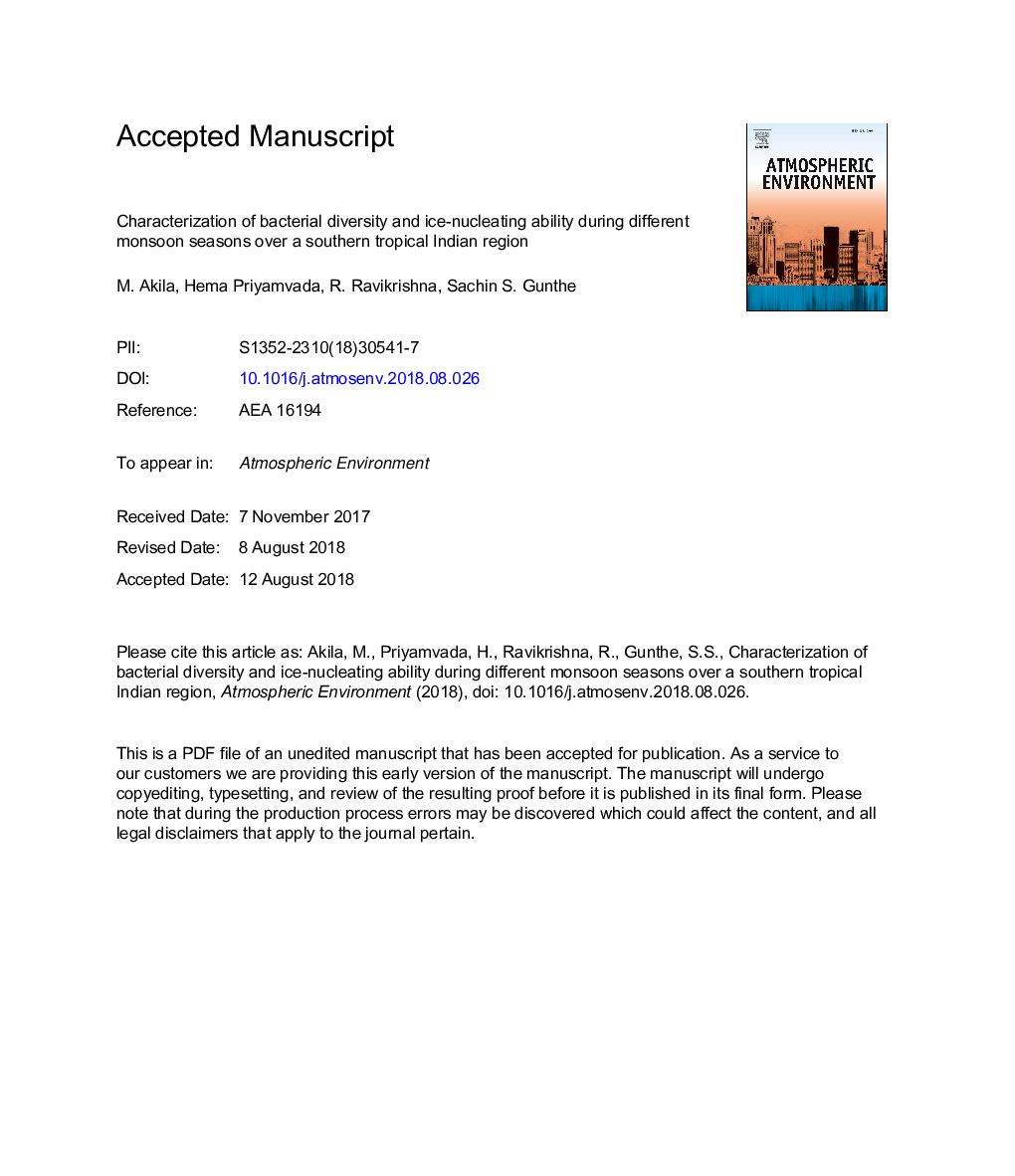| Article ID | Journal | Published Year | Pages | File Type |
|---|---|---|---|---|
| 8863428 | Atmospheric Environment | 2018 | 27 Pages |
Abstract
Bioaerosols abundantly found in the atmosphere can potentially influence the climate by acting as ice nuclei and thus profoundly influencing the hydrological cycle. As the first attempt over India, we report the diversity, abundance, and ice nucleating ability of bacteria present in the rainwater collected at Chennai, during summer and two contrasting monsoon seasons. Diverse bacterial communities were present in all the twenty rainwater samples and predominantly belonged to Actinobacteria (6%), Alpha proteobacter (9%), Bacilli (29%), Betaproterobacteria (14%), Flavobacteria (3%), and Gammaproteobacteria (39%). The most efficient ice nucleating bacteria such as Pseudomonas sp. and Pantoea sp. were present in our precipitation samples and they contributed to 8.4% and 9.4% of the total cultivable bacterial species obtained. The relative abundance of Pseudomonas was highest during the south-west monsoon (75%) whereas Pantoea was abundant in the north-east monsoon (51.8%). The dominant bacteria belonging to the known ice nucleating genera Pseudomonas, Pantoea, and Bacillus were chosen for the determination of their freezing temperatures using tube freeze assay technique. The onset freezing temperature of species belonging to Pseudomonas and Pantoea was recorded as â12â¯Â°C and for those species belonging to Bacillus it was found to be â14â¯Â°C. Further, the number of bacterial cells making up an ice nucleus was estimated at the temperatures ranging from â18â¯Â°C to â12â¯Â°C for all the ice nucleating bacteria and it was found to vary from 106 to 109 (cells/nucleus).
Related Topics
Physical Sciences and Engineering
Earth and Planetary Sciences
Atmospheric Science
Authors
M. Akila, Hema Priyamvada, R. Ravikrishna, Sachin S. Gunthe,
